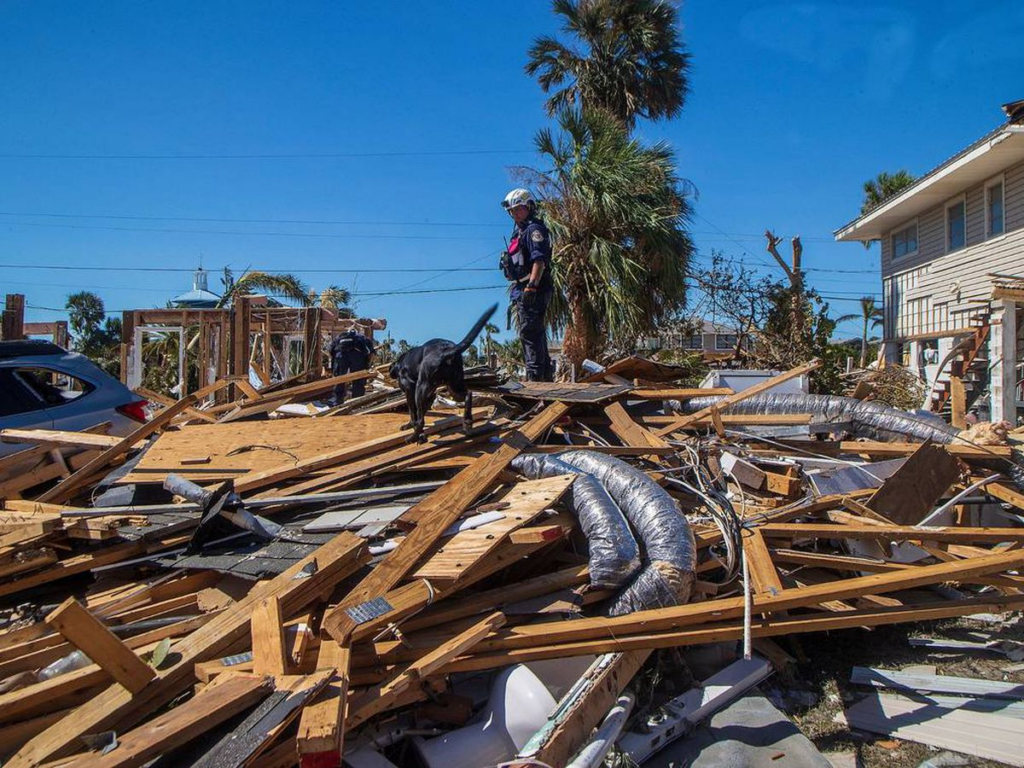
The scope and intensity of Hurricane Ian have pushed potential insured flood losses above the median with reinsurers and auto carriers on the hook, according to analysts at Morgan Stanley.
Cat model estimates for Hurricane Ian’s flood-based insured losses are at an average of $11 billion, which is ~3x the median National Flood Insurance Program (NFIP) payout of $3.1 billion.
These preliminary estimates put it on pace to be one of the costliest US flood events. To put this in perspective, according to Morgan Stanley, Hurricane Katrina’s $24.3 billion (inflation adjusted) NFIP payout was the costliest flood event on record. A NFIP loss at this scale would deplete the NFIP’s 2022 reinsurance.
As of few days ago, FEMA reported that it had received 31,000 NFIP claims following Ian. By early October, it had provided $3.5 million in advance payments to policyholders who had begun the claim process.
At the January 2022 renewals, FEMA secured $1.064 billion of flood reinsurance protection for the NFIP, which covers portions of NFIP losses above $4 billion arising from a single flood event.
Morgan Stanley analysts also pointed out that wind vs. flood damage is likely to compound social inflation woes. As Florida homeowners compare policy coverage vs. actual repair costs, we expect an increase in claim litigation.
Following significant hurricanes, wind vs. flood damage becomes a key legal debate as insureds look for insurance company payouts on policies with limited coverage. Florida insurers might face accelerated social inflationary pressure if lawsuits mount in the already highly litigious state.
Wind is a covered peril under most personal and commercial policies, while flooding is typically not covered by private homeowners’ policies. However, analysts noted, auto and commercial policies typically do cover floods.

Total industry insured loss estimates for Hurricane Ian from cat modellers such as CoreLogic, KCC, Verisk and RMS, with ranges from $41 – $74 billion.
Morgan Stanley said: “We see NFIP paid losses at ~17% of total insured losses, in-line with the average of cat model estimates. At an average industry loss estimate of ~$57b, the NFIP’s 17%, ~$9.7b, would come close to exhausting the NFIP’s reinsurance structure of 4.2% of losses between $4b – $6b; 26.6% of losses between $6b – $8b; and 22.5% of losses between $8b – $10b.”
Reinsurers will take on a portion of the total losses. As mentioned before, the NFIP’s reinsurance agreement covers losses in excess of $4 billion, with 28 reinsurers sharing in 4% to 27% of claims based on the level of total loss.
KCC has estimated that Ian’s auto losses comprise ~10% of total losses, as auto policies also cover flood and large insured flood loss has outsized risk to auto carriers. Auto as a % of total losses are ~2x larger than the average of comparable Florida hurricanes, according to Morgan Stanley.
The NFIP lists 51 insurers and subsidiaries on their list of companies offering flood policies through the Write Your Own (WYO) program. Of that list, the top 10 comprise 87% of the market share in Florida. In our coverage we highlight BRO, AIZ, and ALL to benefit from incremental fee revenues.
Insurers participating in the WYO NFIP program generate fees for claim administration without introducing risk. AIZ’s NFIP WYO fees, in 2017, contributed to net income as an offset to total benefits fees reimbursements. If Ian’s NFIP losses are near cat modeller’s estimated ~$11B (the same size as Harvey) we may see the same tailwind for the above in 2H22.




